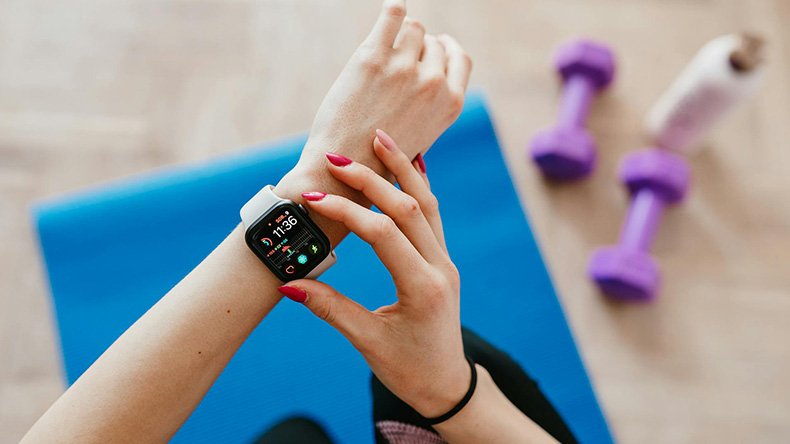LAB develops wearable technology to support well-being

In recent years, technology's role in supporting well-being at work and assessing and monitoring work-related stress has attracted increasing interest. Wearable devices respond to this demand and offer a wide range of possibilities in the workplace and leisure time alike.
Wearable devices mean any technology that a user can wear on their body. The best-known consumer solutions are various smart wristbands and rings that measure well-being and that can be used to support physical performance and mental well-being.
“The world of work has changed enormously in recent years. One of these changes is the new ways technology offers for measuring employees' well-being and, consequently, preventing stress. For example, monitoring stress and physical activity in the workplace provides concrete information on how the employees are coping,” says Asko Kilpeläinen, Senior Lecturer in physiotherapy at LAB University of Applied Sciences.
Wearable devices offer significant benefits for all age groups.
This technology can help encourage children and young people to take more exercise, while it can provide safety and help in everyday life for older people.
“A wide range of sports applications is available for young people in which gamification is a large part of the experience and makes physical activity more fun. Similarly, applications can be developed that motivate older people to take more exercise and improve their quality of life,” says Katariina Velling, Sales Manager at LAB’s Wellbeing unit and RDI Specialist.
| LAB's technologies support well-being and rehabilitation |
|
Innovations from motion capture to virtual rehabilitation
Virtual reality (VR) and augmented reality (AR) technologies also add new dimensions to well-being technology. The world of virtual reality, including a shoulder rehabilitation game for older people, has been tested at LAB.
“The game supports the rehabilitation of users' arms and upper body in an inspiring way. This makes the rehabilitation pleasant for the users, who may not even realise that they are doing the exercises during the activity,” says Velling.
LAB is additionally developing technologies that can be used to measure performance in different occupations, or why not sports. Scalefit software and Movella’s motion capture solution, which measure musculoskeletal stress caused by repetitive motions, are used in this development work.

Among other things, LAB is working on a new kind of ergonomics coach to support the body's natural working postures as well as a virtual AI coach for riders.
“Measurements can be used to assess the physical stress caused by work and to illustrate its effects during and immediately after a performance. This makes it possible to take ergonomics training to a completely new level and prevent repetitive strain injuries”, Kilpeläinen explains.
Making the most out of data takes expertise
Both Kilpeläinen and Velling point out that the benefits of wearable devices do not only come from the data collected by them: an ability to interpret the data is also required. While the rapidly developing artificial intelligence supports the processing of large datasets, human expertise is needed to interpret the data and make conclusions.
“Information security issues are also central. The collected data must be protected, and the user must be able to decide who has access to their data,” Kilpeläinen stresses.
A wide range of wearables is currently available on the market, and it may be difficult for many companies to identify the solutions that best meet their needs. For those struggling with such problems, Velling would like to give one piece of advice:
“LAB offers support for not only data interpretation but also identifying the right technological solutions. We can help you determine which solutions meet the company's needs, how the data can be used, and how the lessons learned can be used in the future. You need not struggle alone with these problems!” she sums up.


